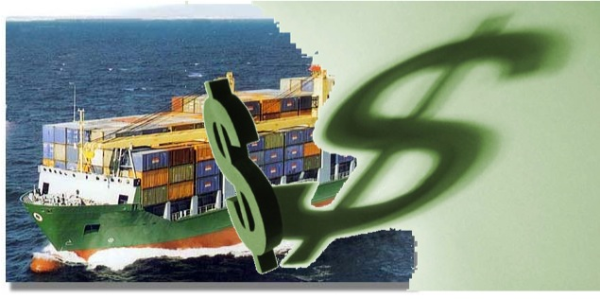2022 Shipping Contracts Astronomical: What That Means for Spot Rates
Ocean freight carriers, which have been in the driver’s seat for the last couple years when it comes to freight rates, are utilizing their leverage right now to negotiate enormous contracts with cargo shippers.
Most of Universal Cargo’s blog readers are small to medium shippers, not BCOs (Beneficial Cargo Owners like your Walmarts and Home Depots of the world who negotiate directly with shipping lines). However, contract rates – which are traditionally year-long but longer-term contracts are now happening too – help indicate what to expect from the spot market, in which most shippers operate.
Obviously, large shippers negotiate contracts for importing and exporting their goods with the expectation those rates will save them money, probably significant money, against the spot market over the course of their contracts. When shipping contracts rise, it’s usually off a trend of rising freight rates in the spot market. Especially when contract rates rise significantly, it indicates there’s expectation for the spot market to continue to rise in the upcoming year.
And the rise being seen in shipping contracts right now is not only significant, it is staggering.
If I was standing when I read the numbers, I might have fallen and hit my head like Heather McDonald after bragging about being triple vaccinated and saying Jesus loves her most.
That’s a scary fall. Just like that fall was dangerous for McDonald’s health, the rise in freight rates and contract amounts is dangerous for the health of shippers’ businesses.
Yesterday was Valentine’s Day, but only shipping lines could have loved what Greg Miller reported in an American Shipper article on the day:

Xeneta [a company that tracks both long- and short-term ocean shipping rates] data on long-term contracts shows a further rise this year on top of gains that built throughout 2021.
In the first half of last year, the average Asia-West Coast long-term rate was around $3,000 per forty-foot equivalent unit. By October, it was up to $6,000-$6,500 per FEU. “For 2022, we see $7,000-$8,000 as an early indicator,” said Berglund.
Pre-COVID, in 2019, Xeneta estimated that the average annual Asia-West Coast rate was around $1,500 per FEU. Rates have quintupled since then. The lower end of the long-term market — the largest shippers getting the best deals — is now at around $3,000 per FEU, the same as the average of the entire long-term market a year ago.
“We see an unprecedented spread,” Berglund added, pointing to the difference between the lowest long-term contract rates paid by the largest shippers and the highest rate in the spot market paid by the smallest shippers.
Xeneta currently puts the Asia-West Coast spot rate at just under $10,000 per FEU, with some cargoes paying additional priority shipment fees of $1,400-$7,500. That brings the max spot rate to around $17,500, and the spread versus the cheapest, lower end of contract rates to around $14,500 per FEU.
“These are ridiculous numbers,” said Berglund, noting that in 2019, pre-COVID, “the spread was $1,300-$1,800. The gap is 10 times bigger today.”
“What that means is that the ones being penalized the most and struggling the most are the smaller importers, and the longer this situation goes on, the more favorable it is — even though it’s painful — to the big-volume shippers.”
Obviously, these are bad numbers for shippers all around. But that gap between what big shippers are paying at the bottom of the spread and what smaller shippers have to pay at the top end significantly increases the price point advantage big companies have over their smaller competition.
What’s scary is those crazy max spot rate numbers of $17,500 aren’t even really max numbers. Shippers who are looking at those kinds of freight rates are not dealing with shippers directly, so there’s also what they pay freight forwarders to arrange their shipments as well as additional fees that could be charged by both the carriers and port terminals (which are sometimes owned by the same company). Additionally, there are costs like customs clearance, trucking, and rail to add in before shippers get to all-in prices.
Traditionally, freight rates are very volatile. It’s possible a big drop could happen in the spot market and the big shippers could be stuck with extremely unfavorable contracts.
However, with the rise of only three carrier alliances dominating all of ocean shipping, carriers have gained the ability to stabilize and even manipulate capacity (the supply side of the market). For years, shipping lines struggled with overcapacity in the market, causing freight rates to often fall to unprofitable lows. It wasn’t that many years ago that I was writing in Universal Cargo’s blog about carriers losing billions of dollars. Over the last couple years, that has reversed with stories about how carriers are making billions.
Judging by how things are looking with shipping contracts, it seems that industry expectations are for things to stay favorable for ocean freight carriers and extremely unfavorable for shippers through 2022. But let’s hope we get some balance back this year.




